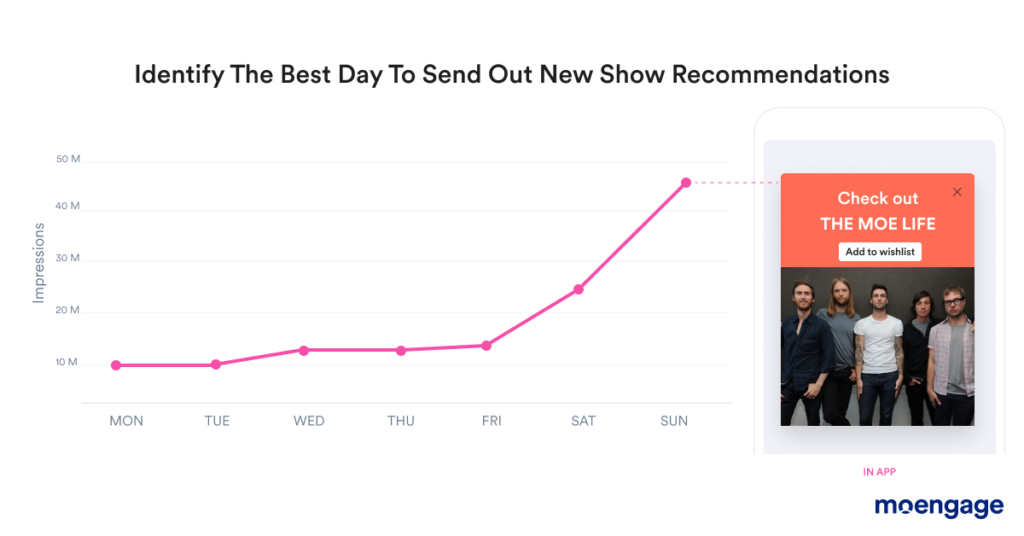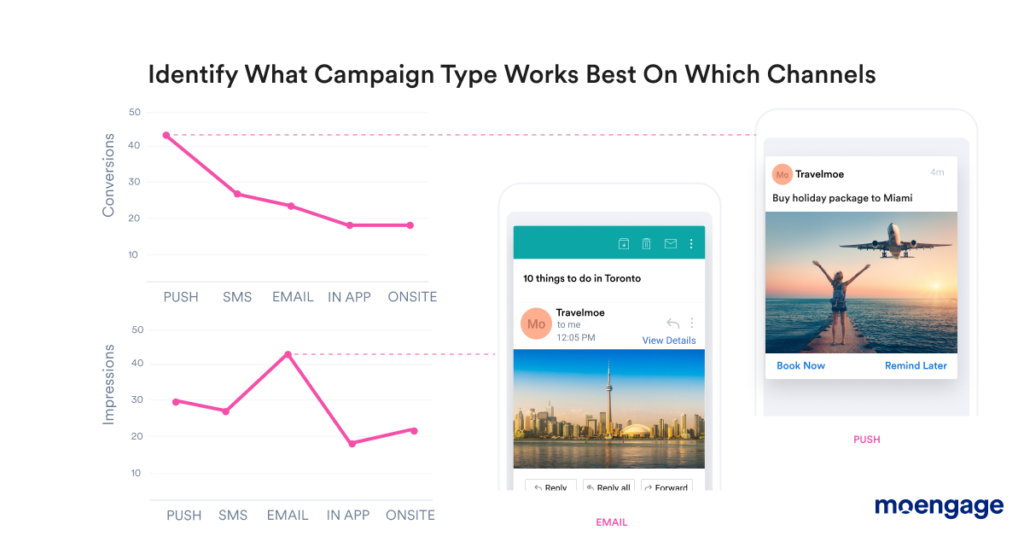Introducing A First-of-the-kind Single Source Of Truth For All Your Engagement Efforts
Consolidated Campaign Stats is an industry-first feature that provides a detailed overview of your campaigns and impact on key business metrics.

Reading Time: 5 minutes
In Norse mythology, Heimdall (or Heimdallr) is an all-seeing, all-hearing god. Experts believe his name originates from the phrase ‘the one who illuminates the world.’ And, that’s the most fitting way to describe MoEngage’s latest feature, Consolidated Campaign Stats!
This first-of-the-kind feature by MoEngage acts as a single source of truth for all your Customer Engagement efforts – from a campaign to a customer to an organizational level.
Why did we build Consolidated Campaign Stats?
Marketing, product, and growth folks who are in charge of Customer Engagement require three types of campaign insights to optimize their efforts for maximum efficiency:
- Consolidated impact of each campaign on key engagement, retention, and business metrics such as revenue, CLV, MAU, WAU, DAU, and so on
- The detailed performance of a particular communication channel across campaigns over time
- Aggregated campaign performance across multiple communication channels such as Emails, Mobile Push Notifications, SMS, Website Push Notifications, In-app Messages, Social Media, and Messaging platforms like WhatsApp or Facebook Messenger
However, different teams within the same organization are comfortable with having their own dashboards. This makes consolidating all the information into a single view requires effort and time. Data architects design systems that source data from multiple sources to a single visualization platform like Tableau or PowerBI. Before the data is visualized, the team runs multiple queries in parallel to get a fraction of the three types of insights as above.
After speaking to multiple marketing, product, and growth stakeholders, MoEngage’s product team rolled up their sleeves and started working to solve this challenge that persists in brands across all verticals and geographies.
How can Consolidated Campaign Stats help you?
MoEngage’s one-of-a-kind, unified dashboard, called Consolidated Campaign Stats, helps insights-led marketers and product owners:
- Evaluate the aggregated performance of their Customer Engagement efforts
- Measure the overall efficacy of one particular communication channel at different time periods, like months of the year, days of the week, time of the day, and so on
- Compare the effectiveness of different communication channels and identify the best-performing ones for each campaign
Importance of Consolidated Campaign Stats and common use-cases
Chances are you’ve found yourself asking questions like:
- How is the performance of my engagement campaigns across all communication channels?
- Which communication channel is working the best for my brand?
- How do different communication channels compare against each other?
- How do the key metrics of individual communication channels change over time?
- What are my top and bottom-performing campaigns sent via a particular communication channel?
Consolidated Campaign Stats will now answer these and more!
Campaign Insights are needed to diagnose low-performing campaigns and identify potential red flags. For example, if a particular campaign has had low open rates in the past 15 days, you could analyze the customer segment and maybe find a large percentage of Apple Mail users, which would impact email open rates.
Another important insight you can derive from this dashboard is finding the best-performing time to send out your campaigns – the hour of the day, day of the week, and week of the month. This will help you bring more predictability into your Customer Engagement efforts and plan your future campaigns better.
The insights available in Consolidated Campaign Stats will help you pick the most effective communication channels for your engagement campaigns.
Here are a few other ways you can use Consolidated Campaign Stats
1. Shopping (E-commerce/Retail/D2C)
- Identify the best day in a week to send out promotional offers through Emails
- Pick between Email and Push Notification as the primary communication channel for upcoming seasonal sale
2. Media & Entertainment (OTT Streaming)

- Identify the most effective time to send TV show recommendations (could be evenings for one customer cohort, while afternoon for others)
- Find out the peak hours of content consumption on your mobile app
- Understand the best frequency to send out subscription renewal emails to your existing customers
3. Banking and Fintech
- Pick the most optimum communication channel to showcase the value of premium credit cards to new customers
- Find the best day of the month to send out monthly bill reminders
4. Travel & Hospitality

- Identify the months in a year when tourism spikes and offer discounts on travel packages to convert more customers
- Understand which channel is working best for a particular marketing campaign, for example, Holiday Packages may get better traction on Push Notifications while an article like ‘10 things to do in Toronto’ may get more clicks on Email
5. Health and Fitness

- Identify best-performing campaigns that are leading to customers booking more workout sessions
- Understand the best frequency to send out membership renewal emails to your existing customers
What insights do you get from Consolidated Campaign Stats?
The dashboard is divided into three parts: KPIs, Channel Performance, and Overall Performance. MoEngage customers can get the following insights from this feature:
1. KPI or Key Performance Indicators
KPIs are the aggregate counts of the primary metrics that capture the overall performance of your Customer Engagement efforts. These are the consolidated stats for all the campaigns you’ve run across all the different communication channels like Emails, Mobile Push Notifications, SMS, Website Push Notifications, In-app Messages, Social Media, and Messaging platforms like Whatsapp or Facebook Messenger.

2. Overall Performance
The Overall Performance section of the dashboard puts together all the data of your channels in one view. You can use this section to compare key metrics such as sent, impressions, clicks, click-through rates, conversions, and conversion rates across all your communication channels. You can also compare the performance of all your channels for different time frames like hourly, daily, weekly, or monthly.

3. Channel Performance
The Channel Performance section provides a consolidated analysis of all your campaign’s stats for every available communication channel. Every channel is showcased using one card, and all metrics for specific channels can be analyzed using a line chart at an hourly, daily, weekly, or monthly granularity.
How can you get started?
If you’re an existing MoEngage customer, you can reach out to your favorite Account Manager or drop an email to us here to enable this new feature. If you’re not an existing customer but wish to give Consolidated Campaign Stats a try, you can connect with our team here.
More and more consumer brands have realized that being customer-centric is key to engaging and retaining customers in the long run. This means moving from a campaign-driven approach to a data-driven approach to Customer Engagement becomes a top priority going forward. With the launch of Consolidated Campaign Stats, we are one more step closer to our aim of enabling marketing, product, and growth functions to adopt an insights-led approach to their Customer Engagement strategy.
Further Reading
- Insights-Led Engagement: How Can Media & Entertainment Brands Engage and Retain Millions of Users Efficiently
- MoEngage Unveils AI-driven, Predictive Insights That Help Marketers Deliver Winning Customer Engagement at Scale
- How Consumer Brands in Southeast Asia Are Winning With Insights-led Customer Engagement
- MoEngage Empowers Brands by Fueling Decisions for Engagements with Insights-Led Customer Journeys












